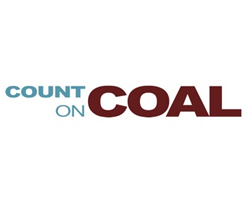The Case for Carbon Capture Has Never Been Stronger

October 3, 2019 - The U.S. Energy Information Administration’s 2019 International Energy Outlook projects that global energy consumption will increase 50 percent by 2050. Electricity consumption is expected to jump an even more staggering 79 percent.
Should electrification take off – as many experts expect it will – and there is a decisive shift to electric vehicles, as well as greater use of electricity for heating and industrial purposes, electricity demand could grow even faster than what is projected here. As seemingly aggressive as this outlook may appear, it could easily prove far too conservative.
This reality – one of an almost unquenchable thirst for energy – underscores the fact that we need an all-hands-on-deck approach to meeting energy demand while simultaneously reducing emissions. Existing technologies will play a critical role but innovations just over the horizon are likely to prove far more important.
Fossil fuels currently meet 80 percent of the world’s energy demand and will remain irreplaceable for the foreseeable future. While their share of the energy pie may shrink in the years ahead, their overall consumption is expected to grow. We are firmly in the era of energy addition, not energy transition. Globally, the great renewables buildout is coming on top of existing energy infrastructure, not in place of it. That’s a fact that should shape energy and climate policy. Unfortunately, for too many climate hawks, that’s science they would prefer to ignore.
While Green New Dealers are spinning yarns about an all-renewable energy future, it’s not going to happen. Renewables are essential to helping meet growing global energy demand, but they’re no silver bullet. The challenge of meeting soaring energy demand while simultaneously reducing emissions begs for breakthroughs in technologies that can reduce emissions from the energy infrastructure the world currently has and from the fuels it currently uses. It also begs for U.S. leadership in achieving those breakthroughs. The case for a U.S.-led moon-shot effort on carbon capture and utilization has never been stronger.
As Fatih Birhol, director of the International Energy Agency said earlier this year, while standing shoulder to shoulder with U.S. Energy Secretary Rick Perry, carbon capture is the “most vital” technology to reducing emissions. His declaration was a call to action.
Charting a Path Forward
Carbon capture’s essential place at the center of the energy demand and emissions challenge prompts an obvious question: are we doing enough to advance this suite of technologies? The short answer is a definitive no.
While promising projects and demonstration efforts now exist, including the Petro Nova and Net Power projects in Texas and the Boundary Dam project in Canada, a handful of projects doesn’t even begin to scratch the surface of what’s needed.
Smart policy – policy already being debated in Congress – can help us get on track. The “USE IT” Act, which builds upon the 45Q tax credit for carbon capture, would go a long way in reducing barriers to carbon capture deployment while also incentivizing the further research and development of technologies that will convert carbon into products of commercial value. Instead of a waste product, captured carbon can become an essential ingredient in cement, steel, chemicals or fertilizer.
A recent report found that the market for products made from captured carbon emissions could reach $800 billion by 2030. Provided the right suite of incentives and support, that’s a market that could be dominated by U.S. companies and U.S. technology.
Any serious proposal to reduce global emissions acknowledges the essential role for carbon capture. It’s past time smart policy to incentivize the development and deployment of this most vital suite of technologies moves from good idea to law.
.png)
.png)

